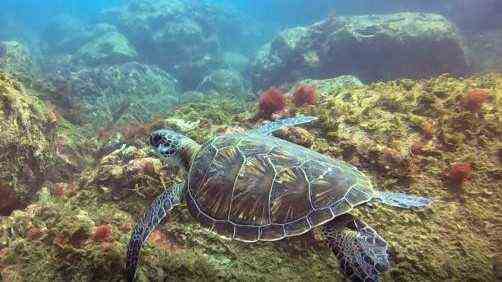One number will always resonate when government representatives from all over the world discuss species conservation for the next ten years at the UN biodiversity summit: one million. So many animal and plant species are threatened with extinction and, in the worst case, could disappear in the coming decades, said the World Biodiversity Council IPBES in a sensational one report in 2019. Some scientists speak of the sixth mass extinction on earth. But where does the number come from, and what is behind it?
In order to calculate the number of endangered species, the experts first had to estimate how many species there are in the world – which is more difficult than it sounds. Over 1.7 million species have been described today, but science agrees that the total number is likely to be significantly higher. Just how high – there is disagreement. Recent estimates range from five to ten million species. The IPBES scientists relied on a conservative estimate of 8.1 million species – three quarters of them insects.
The next task was to find out what proportion of it is actually critically endangered. For this, the scientists referred to the Red List of Endangered Species of the International Union for Conservation of Nature (IUCN) and extrapolated the observation data, as these are only the documented, but by no means all In fact include threatened species. A quarter of all species turned out to be critically endangered.
As far as the diverse class of insects is concerned, the calculation is a bit more complicated – an estimate assumes only a ten percent risk of extinction. Ten percent of 5.5 million insects makes 550,000. And 25 percent of 2.6 million of the remaining animal and plant species is 650,000. Together that would be a good million species that are threatened with extinction. “This estimate is of course associated with a lot of uncertainties and may initially look like a thumb-thumb calculation,” says ecosystem researcher Almut Arneth from the Karlsruhe Institute of Technology, who helped write the IPBES report. “But it is in fact based on observational data and is currently the best that science can deliver in order to remain reasonably serious.”
Numerous biologists still criticize them because of their reference to the Red List. This merely reflects the current state, i.e. the conditions under which the species today Life. With climate change, however, the conditions change radically: The climatic niches of the species are shifting towards the poles and up the mountains, and the species world has to see that it can keep up. It is true that climate change is not yet considered to be the Main contributor to species extinction (it only ranks third behind land use changes and direct exploitation of nature such as rainforest deforestation and overfishing), but that is likely to change in the future.
The first to calculate how many species could become extinct from climate change is Chris D. Thomas. The biologist from the University of York used species distribution models to calculate the risk of extinction in six parts of the world. For hundreds of species, together with colleagues from all over the world, he looked at where their respective range is today and how it would change under three climate scenarios. The result appeared in 2004 Nature: Depending on the climate scenario, the potentially habitable space for some species disappeared completely by the year 2050, for some species it remained the same, but for the vast majority of species it shrank significantly. When this could lead to extinction, Thomas calculated with the help of the so-called Species-area relationship, a theory from island biogeography, according to which the larger the habitable area, the greater the number of species.
There was only one problem: the model could not calculate whether the animal and plant species would actually be able to reach the areas in which the climatic conditions they could tolerate would prevail in the future. Thomas and his colleagues were only able to test two possibilities: Either the species can None at all colonize new areas or Everyone. The result of the projections therefore provided a range and not a number: 15 to 37 percent of all species could become extinct by 2050 due to a warming of up to two degrees Celsius. On average, the risk of extinction is 25 percent. Applied to the entire world, that would be about a million species.
The study was reported worldwide and even discussed in parliaments such as the USA and Great Britain, but it also met with criticism. “We don’t know the future,” says Arneth. “How many species are endangered in the future depends, for example, on how severely climate change will affect us, how the world population and agriculture will change, or what we will eat in the future.”
Other threats such as the destruction of habitats by humans were also excluded from the calculations – which is why the total number is likely to be much higher. The general rule is: Species do not have to become completely extinct in order for entire ecosystems to be thrown out of balance – it is often enough for certain populations to shrink. “The species are not in a vacuum, but interact with each other,” says Arneth. If the range and the dominance of some species decrease, that alone could shift or collapse entire food webs. So the “one million” does not provide the complete picture. “Behind the number stands the destruction of entire ecosystems.”
The good news: It doesn’t have to come to that. Endangered does not mean extinct. “The positive thing is that we can still do something,” says Arneth. She already has a proposal for the UN Conference on the Protection of Species: “We have to preserve and even enlarge the habitats for the species so that they can recover.”

